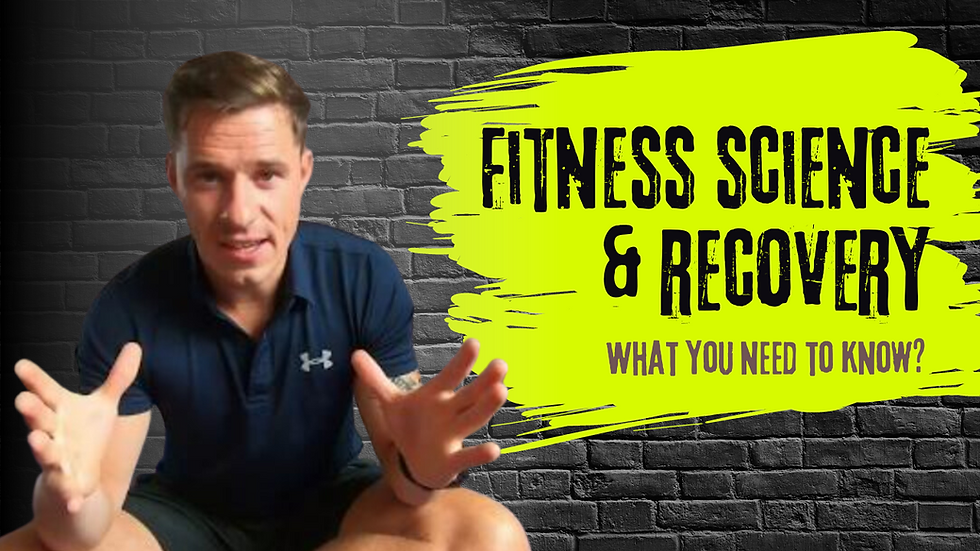When to Take a Rest Day and When to Push Through: The Science of Fitness and Recovery
- Finn Glenn

- Oct 20, 2023
- 2 min read

Striking the right balance between pushing your physical limits and allowing your body to recover is essential for long-term success with your health. It's a challenge many people face. When should you take a rest day and when should you push through? Learning how to plan ahead while at the same time recognize the immediate signs your body gives takes practice. It's important to listen to your body and equally important to be able to correctly discern between what is a momentary feeling vs. physical red flag.
The Science of Muscle Recovery and Rest
Muscle Repair and Growth: When you engage in exercise, particularly strength training, you create microscopic damage in your muscle fibres. It's during rest that your body repairs and rebuilds these fibres, making them stronger and larger. A study published in the "Journal of Applied Physiology" in 2010 found that muscle protein synthesis is elevated during sleep and rest, emphasizing the importance of adequate recovery time.
Hormonal Balance: Overtraining without proper rest can disrupt hormonal balance in the body. Elevated stress hormones like cortisol can lead to muscle breakdown and hinder recovery. A study in the "Journal of Strength and Conditioning Research" in 2009 showed that overtraining can lead to increased cortisol levels and reduced muscle mass.
Injury Prevention: Overuse injuries are common in those who don't allow for adequate rest. Repeated stress on the same muscles and joints without proper recovery increases the risk of injury. Rest days offer a chance for your body to repair and prevent overuse injuries.
Mental Fatigue: Overtraining can also lead to mental fatigue and burnout. A study published in "Sports Medicine" in 2000 highlighted the importance of mental recovery to maintain motivation and enthusiasm for your fitness routine.

When to Take a Rest Day… and When to Push Through
Listen to Your Body: Pay attention to how your body feels. If you're experiencing persistent soreness, fatigue, or pain, it may be a sign that you need a rest day. Remember that your body is capable of far more than you will think.
Follow a Balanced Routine: Incorporate planned rest days into your fitness routine. For most people, one or two rest days per week are sufficient. If you are working through an injury consider a passive workout around the injury or even extra rest days as required.
Modify Your Workouts: On days when you feel fatigued or sore, consider modifying your workout intensity or trying a different type of exercise, like yoga or stretching. Find what works for you and stick with it for awhile to get some form of quantifiable results.
Prioritize Sleep: Adequate sleep is crucial for recovery. Ensure you're getting enough restorative sleep to support your fitness goals. Proper sleep has a huge impact on your desire to get out of bed or sustain the energy throughout the day.
Balancing the decision of when to take a rest day and when to push through is essential for a successful and sustainable fitness journey. The science of muscle recovery and rest underscores the importance of allowing your body to heal and grow. Ultimately, tuning into your body, following a balanced routine, and prioritizing both physical and mental recovery will help you strike the right balance and achieve your fitness goals while staying injury-free and motivated.








































Comments